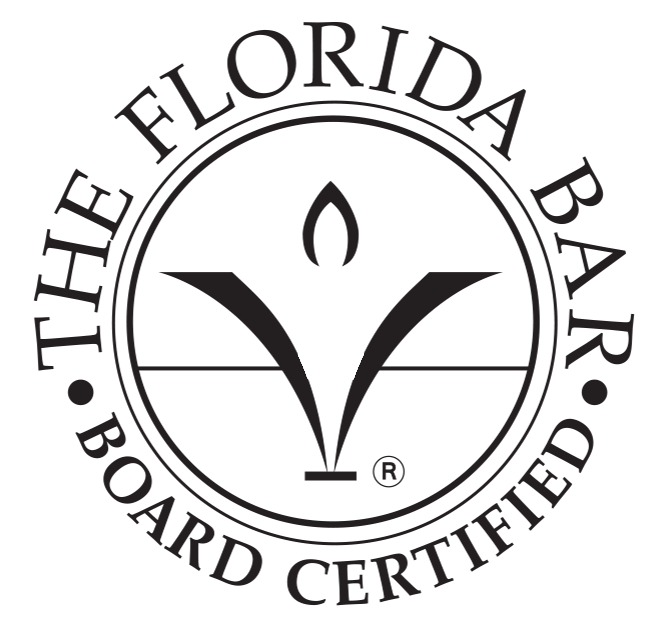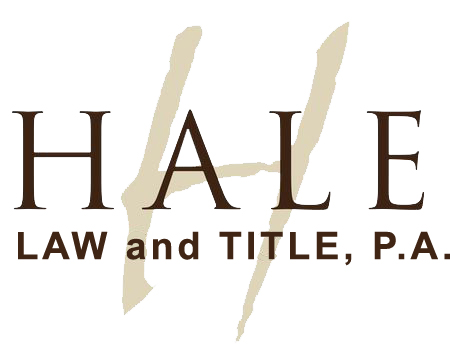As someone who has recently lost a loved one, navigating the probate process can feel overwhelming and confusing. But fear not! In this comprehensive guide, we will demystify the probate process and provide you with a step-by-step roadmap to successfully administer the estate.
From understanding the basics of probate, such as what it entails and who is involved, to diving deep into the intricacies of filing the necessary legal documents and managing estate assets, this guide will equip you with the knowledge and confidence you need to navigate the probate process smoothly.
Whether you are an executor, beneficiary, or simply curious about how the probate process works, this article will break down complex legal jargon, highlight potential challenges, and offer practical tips to ensure a seamless estate administration.
So sit back, relax, and let us guide you through every stage of probate, empowering you to make informed decisions and minimize stress during this difficult time. Let's explore the intricacies of the probate process and unlock the mysteries surrounding estate administration.
Understanding the Role of the Executor
The first step in demystifying the probate process is understanding the role of the executor. The executor is the person responsible for administering the estate and ensuring that the deceased person's wishes are carried out. This individual is typically named in the deceased person's will or appointed by the court if there is no will.
One of the key responsibilities of the executor is to gather all the necessary documents and information related to the estate. This includes the deceased person's will, financial records, property deeds, insurance policies, and any other relevant documents. Gathering these documents is crucial as they will serve as the foundation for the entire probate process.
Once the necessary documents are collected, the executor must file a probate petition with the court. This petition formally initiates the probate process and notifies all interested parties, such as beneficiaries and creditors, that the estate is being administered. The probate petition will outline the basic information about the deceased person, the executor, and the assets and debts of the estate.
Step 1: Gathering Necessary Documents and Information
The first step in the probate process is gathering all the necessary documents and information related to the estate. This includes the deceased person's will, financial records, property deeds, insurance policies, and any other relevant documents.
Gathering these documents is crucial as they will serve as the foundation for the entire probate process. Without these documents, it will be difficult to accurately assess the assets and debts of the estate and fulfill the deceased person's wishes.
To start the process, reach out to the deceased person's attorney, if they had one, to obtain a copy of the will. If a will does not exist, it may be necessary to locate the deceased person's closest relatives to determine if there are any potential heirs who may be entitled to the estate.
Additionally, gather financial records such as bank statements, investment accounts, and retirement plans. These documents will help determine the value of the estate and identify any outstanding debts or liabilities.
Property deeds and titles should also be gathered, as they are essential for transferring ownership of real estate or vehicles. Insurance policies, both life and property, should be included as they may provide additional assets or payouts that need to be accounted for.
Lastly, collect any other relevant documents such as business records, loan agreements, and tax returns. These documents will assist in accurately assessing the estate's value and fulfilling any outstanding obligations.
Step 2: Filing the Probate Petition
Once all the necessary documents and information have been gathered, the next step is to file a probate petition with the court. This petition formally initiates the probate process and notifies all interested parties that the estate is being administered.
To file the probate petition, you will need to visit the probate court in the jurisdiction where the deceased person resided at the time of their death. The court will provide the necessary forms and guidelines for completing the petition.
The probate petition will typically require basic information about the deceased person, such as their name, date of death, and address. It will also include information about the executor, including their name, address, and relationship to the deceased person.
In addition to the basic information, the probate petition will outline the assets and debts of the estate. This includes a detailed inventory of the deceased person's property, including real estate, vehicles, bank accounts, investments, and personal belongings. It will also include a list of any outstanding debts or liabilities, such as mortgages, loans, and credit card debt.
Once the probate petition is completed, it must be filed with the court along with the necessary filing fee. The court will review the petition and, if everything is in order, issue letters testamentary or letters of administration, officially appointing the executor and granting them the authority to act on behalf of the estate.
Step 3: Inventorying and Appraising Assets
After the probate petition has been filed and the executor has been officially appointed, the next step is to inventory and appraise the assets of the estate. This involves creating a detailed list of all the property owned by the deceased person and determining their fair market value.
The inventorying process begins by physically inspecting the deceased person's property and noting down all the assets. This includes real estate, vehicles, bank accounts, investments, personal belongings, and any other valuable items. It is important to be thorough and ensure that no assets are overlooked.
Once the assets have been identified, they need to be appraised to determine their fair market value. This may involve hiring professional appraisers, such as real estate appraisers or jewelry appraisers, depending on the nature of the assets.
The appraised values of the assets will be used to determine the overall value of the estate. This information is crucial for various aspects of the probate process, including tax calculations, creditor claims, and asset distribution to beneficiaries.
It is important to note that certain assets, such as jointly owned property or assets with designated beneficiaries, may not need to go through the probate process and can be transferred directly to the designated individuals.
Step 4: Handling Debts and Taxes
Once the assets have been inventoried and appraised, the executor must handle any outstanding debts and taxes of the estate. This includes notifying creditors, paying off debts, and filing tax returns on behalf of the deceased person.
The executor should notify all known creditors of the deceased person's death and provide them with a copy of the death certificate. This allows creditors to make a claim against the estate for any outstanding debts. It is important to be diligent in notifying creditors to ensure that all legitimate claims are accounted for.
After notifying creditors, the executor must review and evaluate each claim to determine its validity. If the claim is valid, the executor should arrange for the payment of the debt from the estate's assets. If the estate does not have sufficient funds to cover all the debts, the executor must follow the legal guidelines for prioritizing and distributing the available assets.
In addition to handling debts, the executor is also responsible for filing the deceased person's final income tax returns and, if necessary, estate tax returns. This involves gathering the necessary financial records, completing the appropriate tax forms, and ensuring that all taxes owed are paid in a timely manner.
It is recommended to seek the assistance of an experienced estate administration attorney or a certified public accountant (CPA) to navigate the complexities of tax filings and ensure compliance with all applicable laws and regulations.
Step 5: Distributing Assets to Beneficiaries
After all debts and taxes have been handled, the final step in the probate process is to distribute the remaining assets to the beneficiaries. This is done according to the instructions laid out in the deceased person's will or, if there is no will, according to the laws of intestacy in the jurisdiction.
The executor is responsible for gathering the assets and transferring ownership to the designated beneficiaries. This may involve selling property, transferring funds, or distributing personal belongings. It is important to follow the instructions laid out in the will and ensure that all assets are distributed fairly and in accordance with the deceased person's wishes.
It is worth noting that disputes among beneficiaries can sometimes arise during the asset distribution process. In such cases, it is advisable to seek mediation or legal assistance to resolve any conflicts and ensure a fair and equitable distribution.
Common Challenges and Pitfalls in the Probate Process
While the probate process can seem straightforward on paper, there are several common challenges and pitfalls that can complicate the administration of an estate. These include disputes among beneficiaries, complex tax issues, locating and valuing assets, and dealing with creditors.
Disputes among beneficiaries can arise when there are disagreements over the interpretation of the will or the distribution of assets. These disputes can be emotionally charged and may require legal intervention to resolve.
Complex tax issues can also pose challenges during the probate process. Estate tax laws can be intricate, and it is crucial to ensure compliance to avoid penalties or legal issues. Additionally, navigating the tax implications of selling property or transferring assets can be complicated and may require professional assistance.
Locating and valuing assets can be a time-consuming task, especially if the deceased person had a complex financial portfolio or multiple properties. It is important to be thorough in the inventorying and appraisal process to ensure that all assets are accounted for and properly valued.
Lastly, dealing with creditors can be challenging, particularly if the deceased person had significant debts or if there are disputes over the validity of certain claims. It is crucial to follow the legal guidelines for handling creditor claims and ensure that all debts are paid off appropriately.
Hiring an Estate Administration Attorney
Given the complexities and potential challenges of the probate process, it is highly recommended to seek the assistance of an experienced estate administration attorney. An attorney specializing in probate and estate planning can provide valuable guidance, navigate legal complexities, and ensure compliance with all applicable laws and regulations.
An attorney can assist with gathering the necessary documents, filing the probate petition, inventorying and appraising assets, handling debts and taxes, and distributing assets to beneficiaries. They can also provide advice on how to minimize estate taxes, protect assets, and avoid potential disputes among beneficiaries.
Conclusion and Final Thoughts
Navigating the probate process can feel overwhelming, especially during a time of grief and loss. However, with the right knowledge and guidance, it is possible to successfully administer an estate and fulfill the wishes of the deceased person.
By understanding the role of the executor, gathering necessary documents and information, filing the probate petition, inventorying and appraising assets, handling debts and taxes, and distributing assets to beneficiaries, you can navigate the probate process with confidence and minimize stress.
Remember to seek professional assistance from an estate administration attorney when necessary, as they can provide invaluable expertise and guidance throughout the probate process.
While the probate process may seem complex, breaking it down into manageable steps and seeking the necessary support can help demystify the process and ensure a smooth estate administration.

